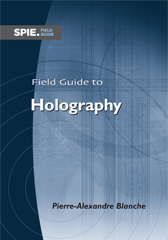Holography
Abstract

Holography is an extension of diffraction in optics, a phenomena that was first described during the XVII century by Francesco Maria Grimaldi (1618-1663). The inaugural experiment of diffraction is credited to Thomas Young (1773-1829) who observed the interference of light passing through two adjacent apertures, convincing him that light indeed had a wave-like nature as proposed by Christiaan Huygens (1629-1695).
The theory of holographic imaging was formulated by Dennis Gabor (1900-1979) who was looking for a way to improve the electron microscope resolution. Gabor coined the term holography from the Greek hólos: “whole” and grafē: “image” because the technique reproduces both components of the optical field: the intensity and the phase. Gabor later received the Nobel Prize in Physics for his contribution in 1971.
Optical holography had to wait for the invention of the laser as it requires the use of a coherent light source. The first holographic recording of 3D objects happened independently in 1962 by Yuri Denisyuk (1927-2006) in the former USSR, and by Emmett Leith (1927-2005) and Juris Upatnieks (1936-) in the USA. The two recording systems used were different since Denisyuk developed a reflection geometry, whereas Leith and Upatnieks used an off axis transmission geometry.
Publications
- P.-A. Blanche, “Holography, and the future of 3D display“. Light: Advanced Manufacturing, 2, 2689-9620, (2021). doi: 10.37188/lam.2021.028
- P.-A. Blanche ed., “Optical Holography—Materials, Theory and Applications”, Elsevier, October 2019. Link
- P.-A. Blanche, “Holography”, in “Handbook of Optical Engineering”, Second edition, D. Malacara ed., CRC Press, December 2017. Link
- P.-A. Blanche, “Holographic 3D Display”, chapter 5 in “The booklet of the College of Optical Sciences”, M. Mansuripur Ed., 2014. Link
- P.-A. Blanche, “Field Guide to Holography”, SPIE press book, FG31, January 2014. Link
